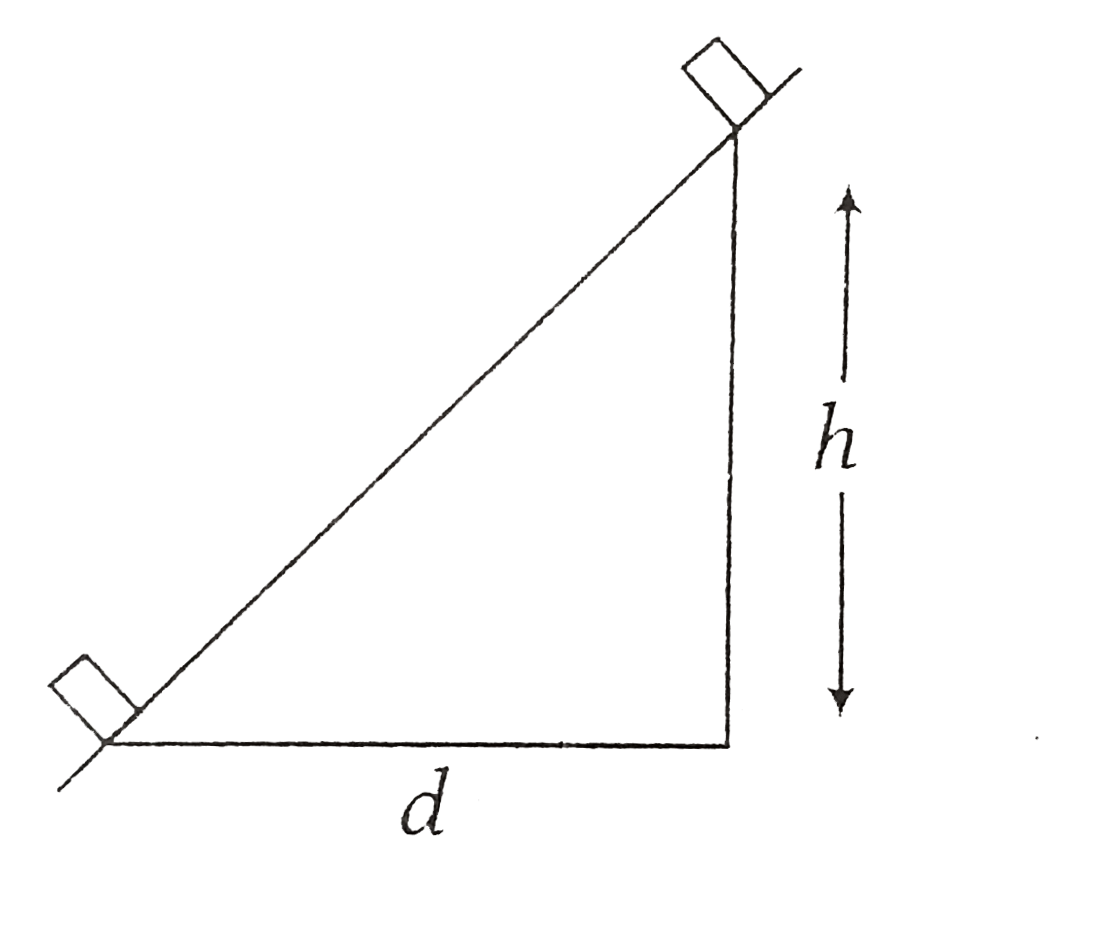The distance between the rails of the track is 1.67 m. How much the outer rail be elecated for curve of 0.5km radius, so that a train moving with speed 54kmh−1 can take safe turn on track.
80 mm
75 mm
60 mm
75 mm
The correct Answer is:B
h elevation of outer rail over inner rail.
h=dv2gr
h=1.67×(15)210×0.5×1000
=0.075m=75mm

Topper's Solved these Questions
- CIRCULAR MOTIONBook:DC PANDEYChapter:CIRCULAR MOTIONExercise:Match the columns
Explore 3 Videos
- CIRCULAR MOTIONBook:DC PANDEYChapter:CIRCULAR MOTIONExercise:Medical entrances s gallery
Explore 19 Videos
- CIRCULAR MOTIONBook:DC PANDEYChapter:CIRCULAR MOTIONExercise:Check point
Explore 45 Videos
- CENTRE OF MASS, LINEAR MOMENTUM AND COLLISIONBook:DC PANDEYChapter:CENTRE OF MASS, LINEAR MOMENTUM AND COLLISIONExercise:Level 2 Subjective
Explore 21 Videos
- COMMUNICATION SYSTEMBook:DC PANDEYChapter:COMMUNICATION SYSTEMExercise:Only One Option is Correct
Explore 27 Videos
Similar Questions
A train is moving at the rate of 60 km per hour around a curve of radius 500 m and the distance between the rails is 170 cm. By how much the outer rail be raised above the inner one so that there may be no lateral thrust on the outer rails ? (g=9.8ms−2)
View SolutionA railway track goes around a curve having a radius of curvature of 1 km. The distance between the rails is 1 m. Find the elevation of the outer rail above the inner rail so that there is no side pressure against the rails when a train goes round the curve at 36km/hr
View Solution
Knowledge Check
The radius of curvature of railway line at a place is 200 m. If the distance between the rail is 1.6 m and the outer rail is raised by 0.08 m above the inner rail .The speed of the train for which there is no side pressure on the rails (g=10m/s2)
A5m/sB10m/sC15m/sD20m/sA train of mass 100 tons (1 tons =1000kg) runs on a meter gauge track ( distance between the two rails is 1m). The coefficient of friction between the rails and the train is 0045. The train is powered by an electric engine of 90% efficiency. The train is moving with uniform speed of 72kmph at its highest speed limilt . Horizontal and vertical component of earth's magnetic field and BH=10−5T and BV=2×10−5T. Assume the body of the train and rails to be perfectly conducting.
The potential difference between the two rails isA100μVB200μVC400μVD800μVA train of mass 100 tons (1 tons =1000kg) runs on a meter gauge track ( distance between the two rails is 1m). The coefficient of friction between the rails and the train is 0045. The train is powered by an electric engine of 90% efficiency. The train is moving with uniform speed of 72kmph at its highest speed limilt . Horizontal and vertical component of earth's magnetic field and BH=10−5T and BV=2×10−5T. Assume the body of the train and rails to be perfectly conducting.
The electrical power consumed by the trains isA1.11MWB1MWC0.50MWD0.90MW
A trains has to negotiate a curve of radius 400m. By how much should the outer rail be raised with respect to the inner rail for a for a speed of 48kmh−1 ? The distance between the rails is 1m.
View SolutionA train has to negotiate a curve of radius 2000 m. By how much should the outer rail be raised with respect to inner rail for a speed of 72kmh−1. The distance between the rails is 1 m.
View SolutionA train has to negotiate a curve of radius 2000 m. By how much should the outer rail be raised with respect to inner rail for a speed of 72kmh−1. The distance between the rails is 1 m.
View SolutionA train of mass 100 tons (1 tons =1000kg) runs on a meter gauge track ( distance between the two rails is 1m). The coefficient of friction between the rails and the train is 0045. The train is powered by an electric engine of 90% efficiency. The train is moving with uniform speed of 72kmph at its highest speed limilt . Horizontal and vertical component of earth's magnetic field and BH=10−5T and BV=2×10−5T. Assume the body of the train and rails to be perfectly conducting.
If now a resistor of 10−3Ω is attached of between the rwo rails, the extra units of energy ( electricity) consumed dueing a 324km rund of the train is ( 1 unit of power =1kW Hour ) ( assume the speed of train to remain unchanged.
View SolutionA train has to negotiate a curve of radius 800 m. By how much height should the outer rail be raised with respect to inner rail for a speed of 96kmh−1? The distance between the rails is 1 m
View Solution
